

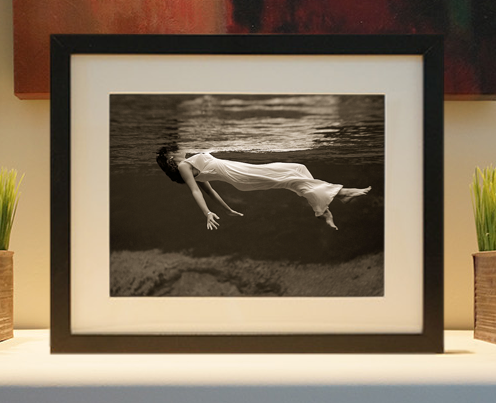
Framed or unframed, desk size to sofa size, printed by us in Arizona and Alabama since 2007. Explore now.
Shorpy is funded by you. Patreon contributors get an ad-free experience.
Learn more.

- Lofty addition
- In 1912
- Keenan Building
- Six years old
- Taken from the P.J. McArdle Roadway?
- It stood only 47 years
- Three track mind
- Incline to the right
- Reach for the sky, 1912 style
- No clean sweep
- Same Job Title, Same Face
- Sadly Lost
- Beautiful ...
- Where you get your kicks
- Aim High
- Pueblo Revival sisters
- Pueblo Neoclassicism
- Milk Man
- Regional dialect.
- Spielberg's inspiration
- Great Photo
- Loaf Story
- Do you still have the Rakes category?
- Could almost be a scene from the 1957 movie 'Hell Drivers'
- The Wages of Fear.
- Conspicuous by their absence
- Got Milk?
- All that aluminum
- No lefties
- Smoke 'em if you've got 'em
Print Emporium
War Clouds: 1864
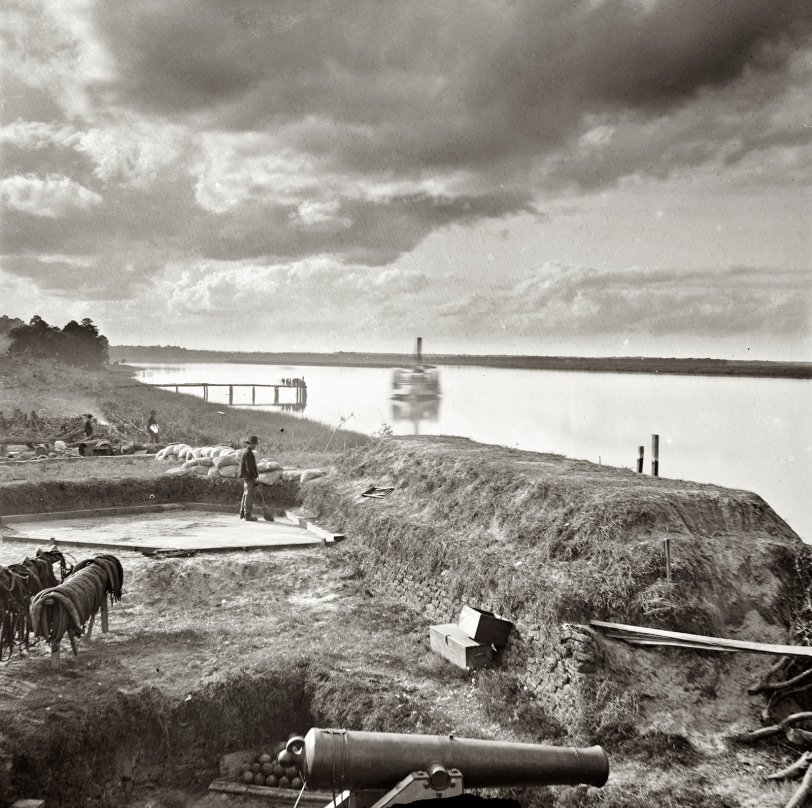
1864. Vicinity of Savannah, Georgia. View of Fort McAllister on the Ogeechee River. Right half of a glass-plate stereograph by Samuel Cooley. View full size.
Fort McAllister
I had assumed that the photographer was with the Union Army as I seem to recall reading somewhere that photographs from Southerners are far rarer than from Northerners. Southern photography was a victim of the blockade - the Confederacy needed medicines and weapons more than they needed photographic chemicals.
Knowing that Cooley was with the Union Army (and accepting December 1864 as totally accurate) that would set the date between December 14 (the day after Hazen's XV Corps took the fort) and the end of the year. The look of the place is rather settled (the soldier sweeping, the various items of harness including horse collars neatly placed on the rails behind the artillery piece), which would suggest that it may not have been that close to the fort's fall. Sherman took the city of Savannah on December 22 and presumably Cooley would have shifted to the city after that, so the most likely date for this photo is between December 14 and probably Christmas.
Incongruous
There is something vaguely incongruous about the soldier (I suppose) standing on what I assume is a wooden gun platform with a broom, while a few feet away is a very large cannon.
I wish the date was a little more specific than just "1864." Fort McAllister was attacked twice during the Civil War, once in March 1863 by a trio of monitors, and again in December 1864 during Sherman's March to the Sea. Presumably this picture dates to the period after Sherman's troops took the fort.
[Information for some of these is spotty to nonexistent. Many of the Georgia and South Carolina photos were taken by Northern photographers after bombardment of the coast by the Federal Navy. Sam Cooley was attached to the 10th Corps of the Union Army. - Dave]
Clouds
The wet-plate photography of the civil war period was not capable of capturing clouds and sky tones at the same exposure as the foreground would require. This must be a composite image, with two exposures taken..one for the sky, and another for the foreground and then combined. Not an easy task for a glass-plate stereo pair.
[While that was often the case in the days before panchromatic emulsions, it wasn't always the case, especially if the sun was not at its zenith or on very overcast days. Another example here. - Dave]





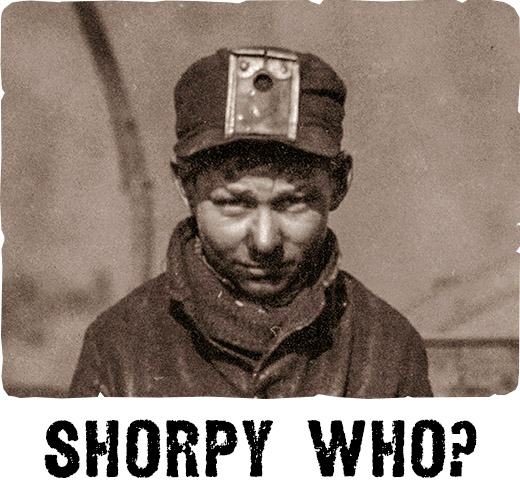
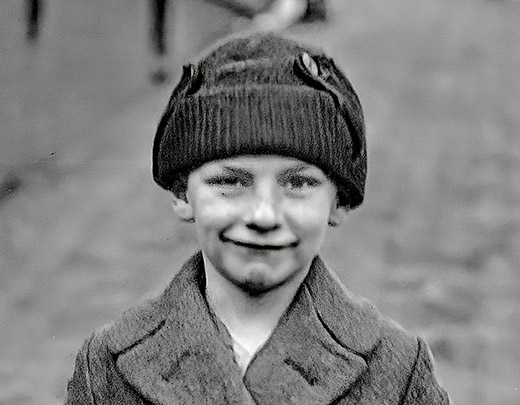
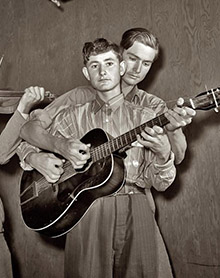
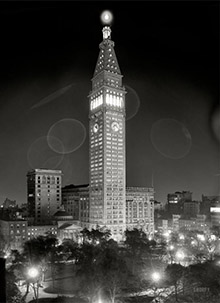
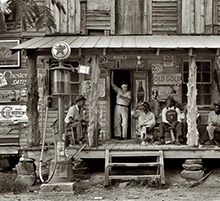
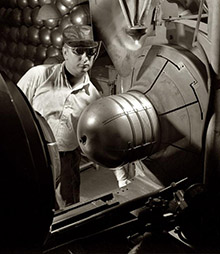
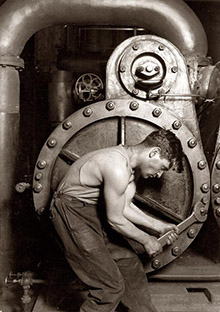
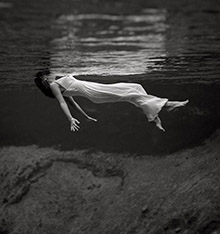
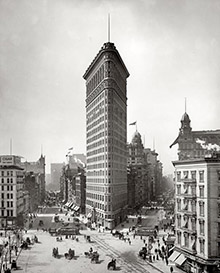
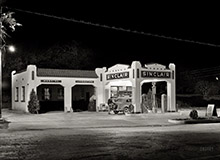
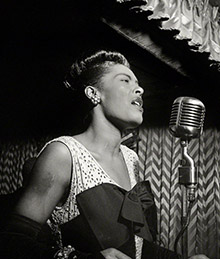
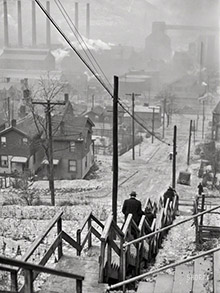
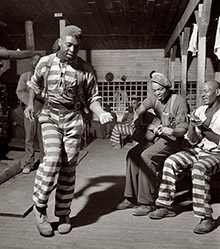
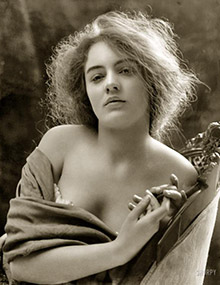
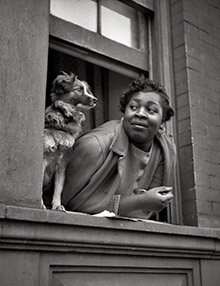
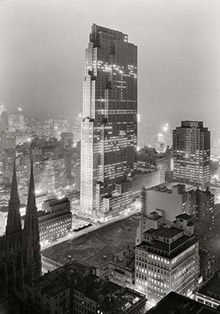
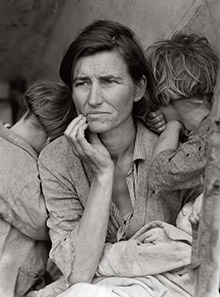
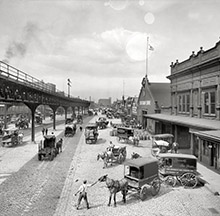
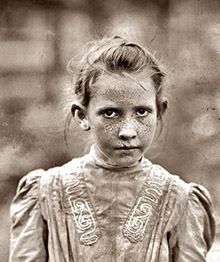
On Shorpy:
Today’s Top 5